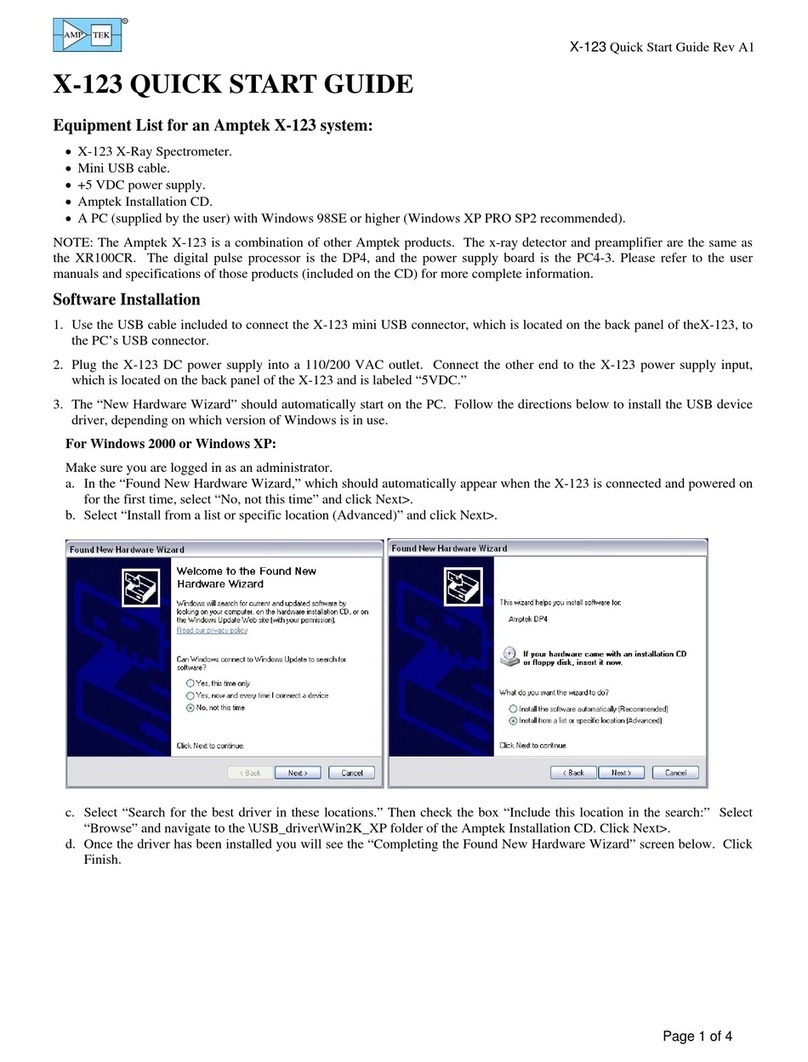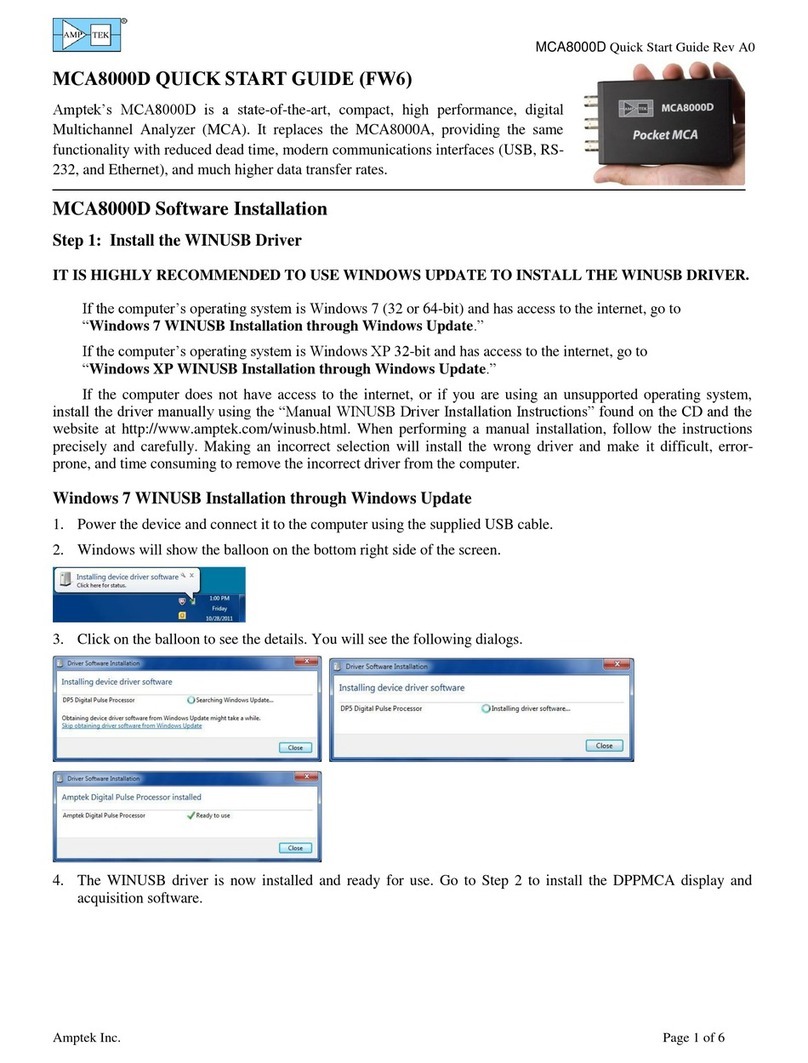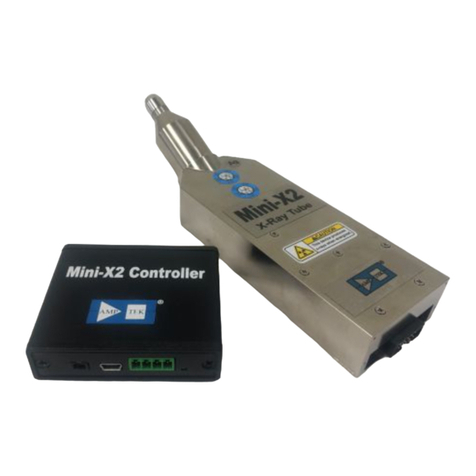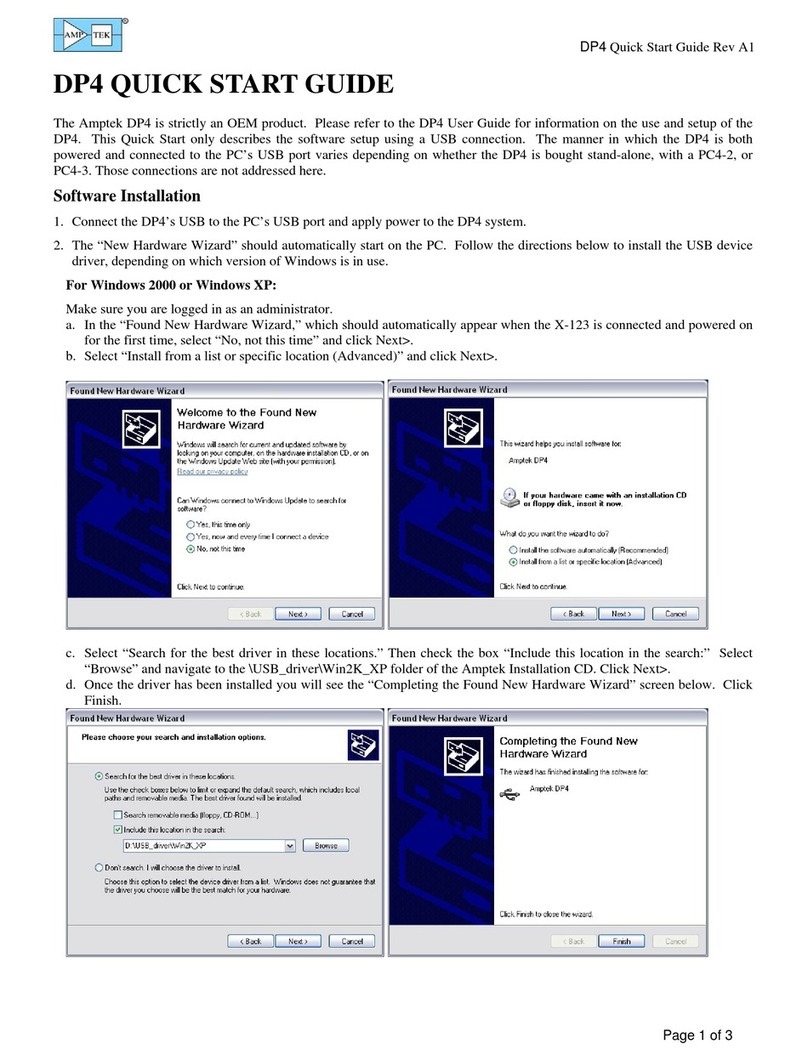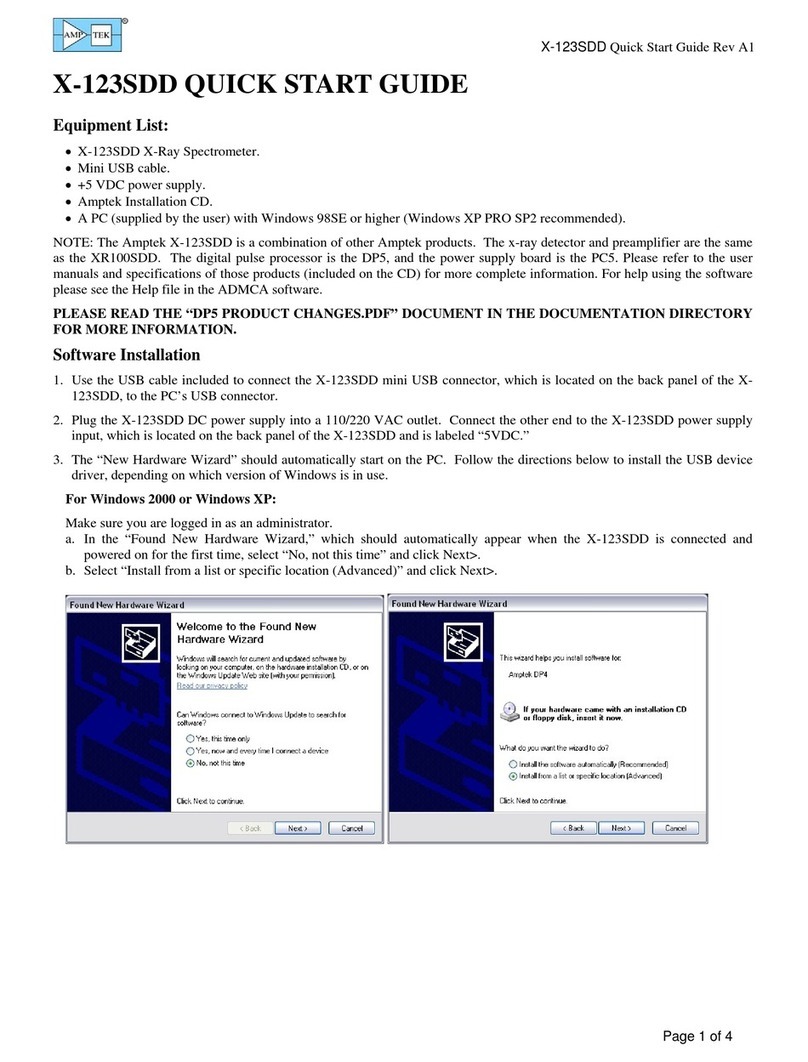
Amptek Inc. XR-100CR Manual
- 8 -
4 OPERATING NOTES FOR THE XR-100CR CONNECTED TO THE PX2CR
1. Turn the power to the PX2CR OFF.
2. Connect the 9-Pin D-Connector from the XR-100CR to the PX2CR.
3. Connect the Output of the XR-100CR (OUT) directly to the Input of the PX2CR (AMP IN) with
a BNC cable. DO NOT terminate the cable with a 50 termination.
4. Connect the Output of the PX2CR (AMP OUT) directly to the input of a Multichannel Analyzer
(MCA). DO NOT terminate the cable with a 50 termination.
5. Connect the +/- TEMP from the PX2CR to a µA meter.
6. Turn the AC power to the PX2CR ON via the rear panel switch.
7. Observe the µA meter. As the temperature of the cooler decreases, the µA meter will decrease
from 293 µA to about 250 µA. The temperature monitor IC provides 1 µA per 1°K. Please note:
room temperature = 293°K = 20°C.
NOTE:
Depending on the detector type, the internal temperature monitor could be a Diode sensor instead of an
IC sensor. If it is an IC sensor, the above instructions are valid. If it is a Diode sensor, please see
below.
For detectors with Diode temperature sensors:
The +/- TEMP MONITOR on
the PX2CR will be measured in
mV instead of A. The graph to
the right is used to cross
reference the mV reading to the
actual detector temperature in
degrees C.
If the PX2CR was ordered
together with a detector that has
a Diode temperature sensor, it
has been modified at the factory
to directly read in mV across the
(+ TEMP -) banana terminals.
This modified PX2CR is set at
the factory to provide 800 A of
current through the diode and
provide a TEMP reading in mV
only.
If a customer has both types of detectors with IC and Diode temperature sensors, the measurement can
still be made with a standard PX2CR that has not been modified exclusively for the Diode sensor. For
the IC operation, perform the A measurement as described in steps 5, 6, and 7 above. For Diode
operation, connect the two + and - terminals together with a banana shorting plug and measure mV
between the shorted + and - banana plug and the PX2CR chassis ground. Then cross reference the mV
reading to the graph in order to get degrees C.
XR100 Temperature Sensor Calibration
1N914 Lot #P1839244 I = 800uA
y = -0.4329x + 281.5
-65
-55
-45
-35
-25
-15
-5
5
15
25
590 610 630 650 670 690 710 730 750 770 790 810
mV
deg C
7/19/02












